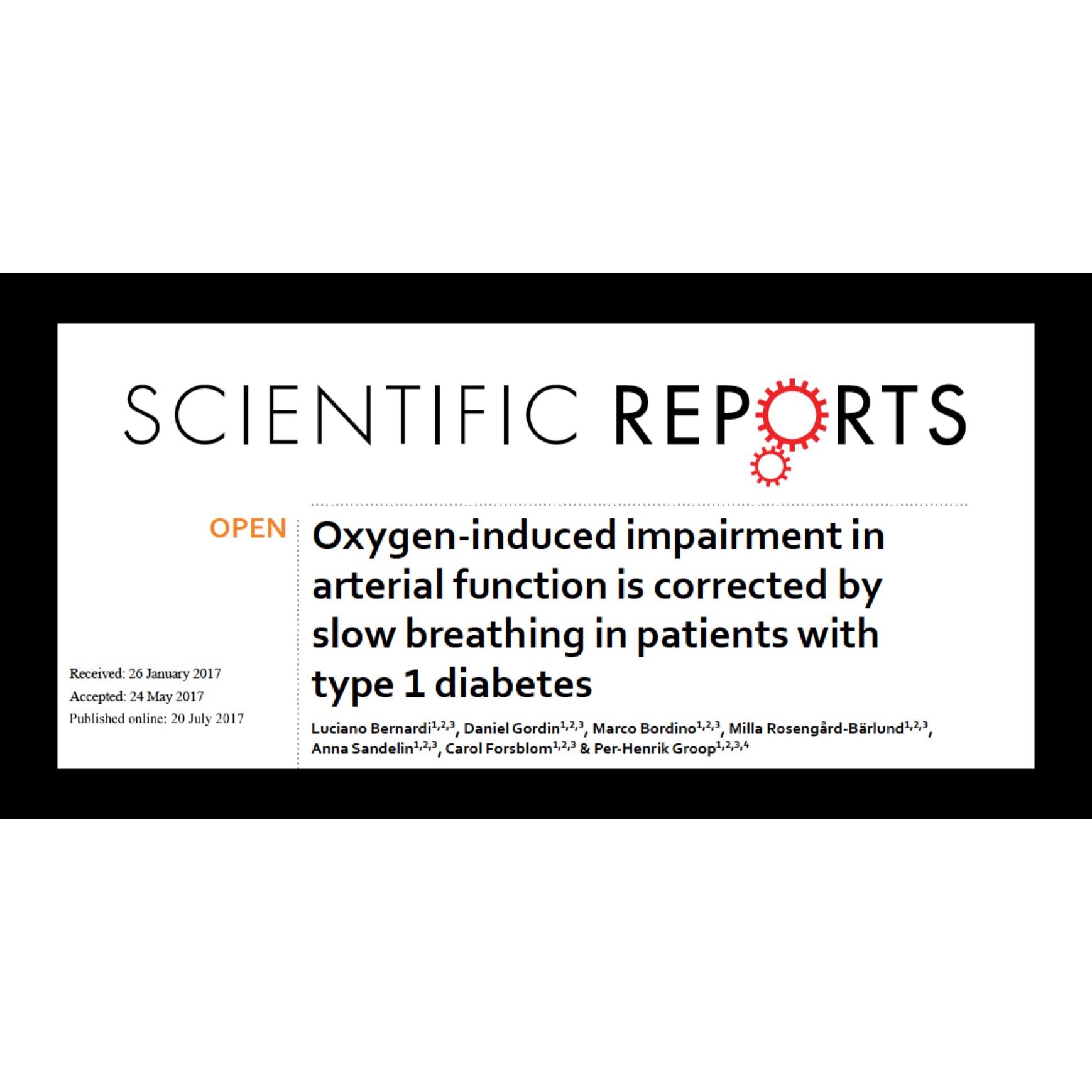Key Points
Slow breathing increased autonomic function, arterial function, and blood oxygen saturation in type 1 diabetic patients
Slow breathing stimulates the parasympathetic nervous system and suppresses the sympathetic nervous system, providing an antioxidant effect
“Slow breathing could be a simple beneficial intervention in diabetes.”
Breathing Blueprint Summary
The last key point above, taken directly from the abstract, says it all. This paper was published in Nature, one of the most prestigious scientific journals around, and they are highlighting the usefulness of slow breathing for diabetes and autonomic function in general. Pretty awesome.
Diabetics suffer from an enhanced risk for cardiovascular disease, which is associated with autonomic dysfunction. However, slow breathing has been shown to restore autonomic balance, suggesting that it might be applicable in type 1 diabetes.
Participants in the study performed 5 minutes of spontaneous breathing, followed by 2 minutes of slow breathing at 6 breaths/min. That is a very short amount of time, yet they still got fairly remarkable results.
During spontaneous breathing, diabetics had worse baseline data than controls. For example, diabetics had a lower resting blood oxygen saturation and higher blood pressure. The main marker of autonomic function that they measured was the baroreflex sensitivity (BRS). BRS measures your body’s ability to quickly adjust your blood pressure to match the current circumstances. At baseline, the diabetics’ had a lower BRS score.
However, after just 2 minutes of slow breathing, their BRS increased to values similar to those of the controls during spontaneous breathing. The authors believe this occurred due to a reduction in sympathetic nervous system activity and an increase in parasympathetic activity.
They also provide evidence that this shift in autonomic activity has a direct antioxidant effect. Because diabetics (and really anyone with a chronic disease) suffer from excess oxidative stress and free radicals, this aspect of slow breathing is extremely important for improving our overall health and well-being.
Lastly, slow breathing also improved the arterial function and blood oxygen saturation of the diabetics. The authors suspect the improvements in oxygen saturation were due to improved ventilation perfusion (i.e., better matching of air and blood flow in the lungs).
In summary, with only 2 minutes of slow breathing, type 1 diabetics were able to improve autonomic function, enhance antioxidant capacity, and improve blood oxygen saturation. These results provide practical evidence that slow breathing can improve the overall health of diabetics.
Abstract from Paper
Hyperoxia and slow breathing acutely improve autonomic function in type-1 diabetes. However, their effects on arterial function may reveal different mechanisms, perhaps potentially useful. To test the effects of oxygen and slow breathing we measured arterial function (augmentation index, pulse wave velocity), baroreflex sensitivity (BRS) and oxygen saturation (SAT), during spontaneous and slow breathing (6 breaths/min), in normoxia and hyperoxia (5 L/min oxygen) in 91 type-1 diabetic and 40 age-matched control participants. During normoxic spontaneous breathing diabetic subjects had lower BRS and SAT, and worse arterial function. Hyperoxia and slow breathing increased BRS and SAT. Hyperoxia increased blood pressure and worsened arterial function. Slow breathing improved arterial function and diastolic blood pressure. Combined administration prevented the hyperoxia-induced arterial pressure and function worsening. Control subjects showed a similar pattern, but with lesser or no statistical significance. Oxygen-driven autonomic improvement could depend on transient arterial stiffening and hypertension (well-known irritative effect of free-radicals on endothelium), inducing reflex increase in BRS. Slow breathing-induced improvement in BRS may result from improved SAT, reduced sympathetic activity and improved vascular function, and/or parasympathetic-driven antioxidant effect. Lower oxidative stress could explain blunted effects in controls. Slow breathing could be a simple beneficial intervention in diabetes.
Journal Reference:
Bernardi L, Gordin D, Bordino M, Rosengård-Bärlund M, Sandelin A, Forsblom C, Per-Henrik Groop PR. Oxygen-induced impairment in arterial function is corrected by slow breathing in patients with type 1 diabetes. Sci Rep. 2017;7:6001. DOI:10.1038/s41598-017-04947-4.

